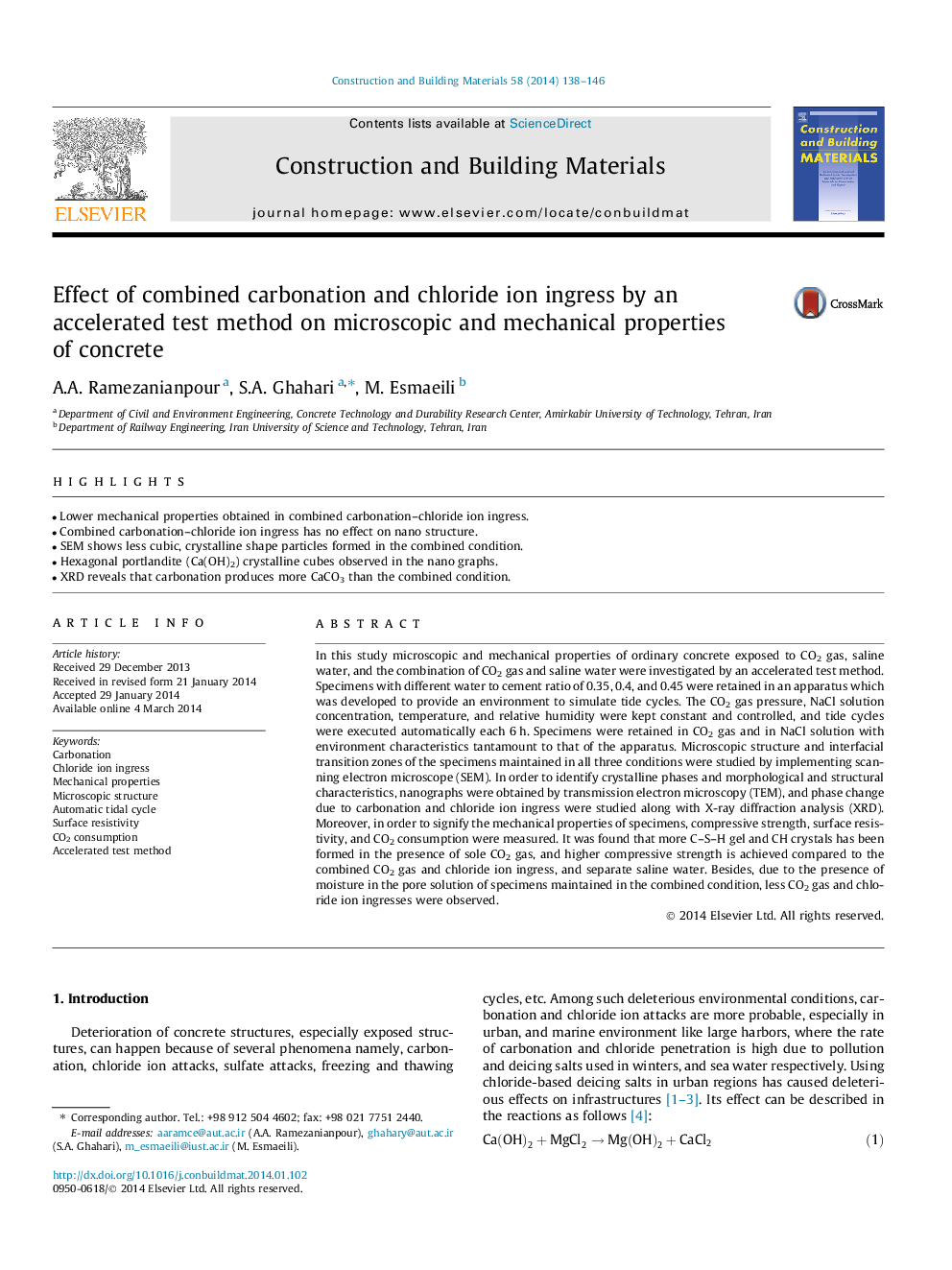| Article ID | Journal | Published Year | Pages | File Type |
|---|---|---|---|---|
| 257687 | Construction and Building Materials | 2014 | 9 Pages |
•Lower mechanical properties obtained in combined carbonation–chloride ion ingress.•Combined carbonation–chloride ion ingress has no effect on nano structure.•SEM shows less cubic, crystalline shape particles formed in the combined condition.•Hexagonal portlandite (Ca(OH)2) crystalline cubes observed in the nano graphs.•XRD reveals that carbonation produces more CaCO3 than the combined condition.
In this study microscopic and mechanical properties of ordinary concrete exposed to CO2 gas, saline water, and the combination of CO2 gas and saline water were investigated by an accelerated test method. Specimens with different water to cement ratio of 0.35, 0.4, and 0.45 were retained in an apparatus which was developed to provide an environment to simulate tide cycles. The CO2 gas pressure, NaCl solution concentration, temperature, and relative humidity were kept constant and controlled, and tide cycles were executed automatically each 6 h. Specimens were retained in CO2 gas and in NaCl solution with environment characteristics tantamount to that of the apparatus. Microscopic structure and interfacial transition zones of the specimens maintained in all three conditions were studied by implementing scanning electron microscope (SEM). In order to identify crystalline phases and morphological and structural characteristics, nanographs were obtained by transmission electron microscopy (TEM), and phase change due to carbonation and chloride ion ingress were studied along with X-ray diffraction analysis (XRD). Moreover, in order to signify the mechanical properties of specimens, compressive strength, surface resistivity, and CO2 consumption were measured. It was found that more C–S–H gel and CH crystals has been formed in the presence of sole CO2 gas, and higher compressive strength is achieved compared to the combined CO2 gas and chloride ion ingress, and separate saline water. Besides, due to the presence of moisture in the pore solution of specimens maintained in the combined condition, less CO2 gas and chloride ion ingresses were observed.
